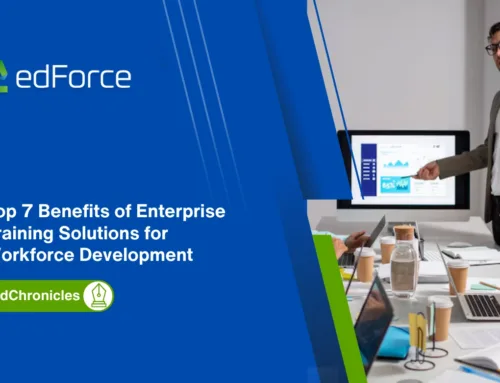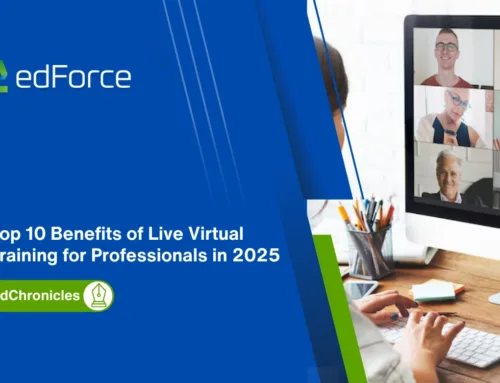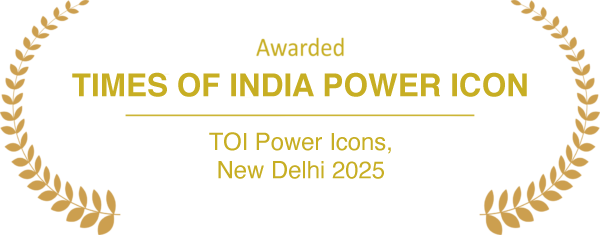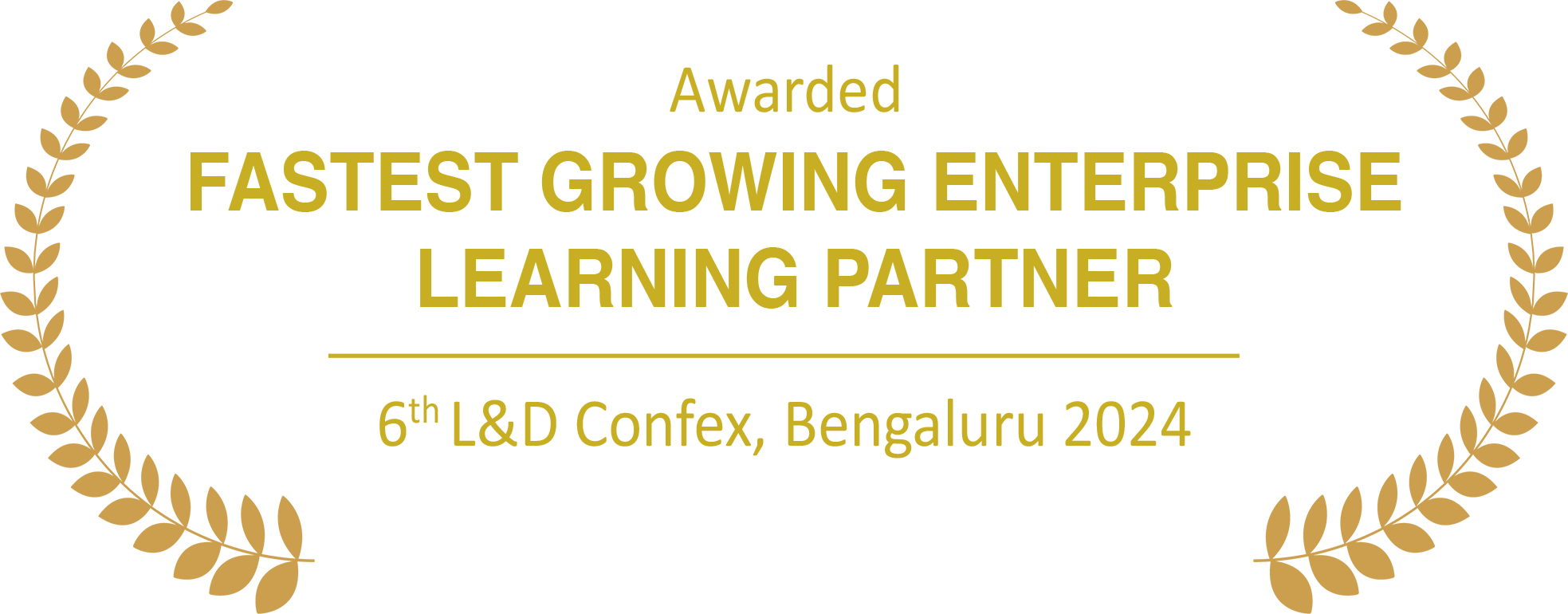
Many companies are increasing their investment in Learning and Development (L&D) to keep up with rapid changes in technology, work culture, and industry demands. In fact, global spending on L&D has crossed £258 billion annually.
Despite these large investments, the results are often disappointing:
- 75% of managers are not satisfied with their company’s L&D function
- 70% of employees say they don’t have the skills required to do their job effectively
- And only 12% apply the skills they learn back in their daily work
These numbers highlight a major issue: a significant portion of L&D spending doesn’t lead to real improvements in performance, productivity, or employee growth.
So where’s the disconnect?
In many cases, L&D programs are not designed with clear business goals in mind. They often fail to address real skill gaps, take too long, or lack proper follow-up. As a result, training feels irrelevant, and employees lose interest.
At edForce, we work closely with companies of all sizes to help them get better results from their training efforts. Let’s explore what high-performing companies do differently and how you can make your L&D efforts more impactful and cost-effective through L&D budget optimization.
The Real Problem With L&D
Most companies have good intentions. They want to help their employees grow, learn new skills, and succeed at work. But many L&D programs just don’t work the way they should.
Why? Because they’re:
- Too generic
- Too slow to deliver
- Not connected to real business needs
- Hard to track or measure
- And often just “tick-the-box” exercises
At edForce, we work with all kinds of companies from tech giants to startups with the goal of ensuring their L&D efforts actually have a measurable impact. Along the way we’ve learned exactly what distinguishes successful training programs from training offerings that waste your time and our money. One major difference is a strong focus on L&D budget optimization from the start.
How Smart Companies Do L&D Differently
Here’s what the best companies are doing with their L&D budgets and how you can do the same.
1. Start With a Clear Goal
Before you start any training program, ask yourself:
What are we trying to improve or fix?
Is it:
- Onboarding new hires faster?
- Training future managers?
- Upskilling teams to adapt to new technology?
- Supporting digital transformations?
You need a clear objective. If there isn’t a clear objective, you might just be guessing. And guessing wastes time, effort, and budget. Smart planning leads to better L&D budget optimization.
2. Find Out Where the Skill Gaps Are
Once you’re are aware of your objective, you’ll need to assess your team’s existing skills and the skills they don’t have. This is called a “capability gap analysis,” and it is just as simple as it sounds.
You can:
- Use tools within your Learning Management System (LMS)
- Ask managers for feedback
- Have employees assess their own skills
- Implement short assessments or quizzes
This gives you a real picture of what’s going on and helps you build training that actually matters.
3. Set Learning Goals for Each Role
Not everyone needs the same training. A new team lead needs different skills than a senior developer or a customer support rep. So, set learning goals based on roles and real job needs.
For example:
If a new manager scores low on “coaching team members,” their learning goal could be to improve that skill within 6 weeks.
This makes training feel more relevant and people are more likely to take it seriously.
4. Use the Right Training Format
No one likes to watch hours-long boring videos. The best companies use a variety of learning formats to make things interesting and relevant:
- On-the-job learning: Learning while handling real tasks
- Mentoring & peer coaching: Learning from someone else on the team
- Virtual workshops: Learning from an expert in an interactive session
- Microlearning: Watching short videos or receiving tips on specific topics
- Social learning: Group discussion, stretch assignments, lunch-and-learns
Different people learn in different ways, so mix it up to get better results.
5. Track Progress and Measure Results
How do you know if your training worked? The best companies track progress and measure success using simple data:
- How many people completed the training?
- Did their performance improve afterward?
- Are they using the new skills on the job?
- Did they like the training?
- How long did it take them to become good at the new skill?
- Was it worth the money?
At edForce, we help companies collect and use this data to make better decisions and show leaders that L&D is making a real difference. This is key for ongoing L&D budget optimization.
Why This Matters More Than Ever
Things are changing fast.
- Skills that were important five years ago might not be enough today
- AI and automation are changing how we work
- Remote teams need stronger communication and leadership skills
- It’s getting harder to hire people with the skills you need
That means you can’t rely on hiring alone but you need to grow talent from within. Companies that invest in their people’s growth are twice as likely to hit performance goals, according to McKinsey.
How edForce Helps You Get It Right
At edForce, we’re more than just a training vendor; we’re your Workforce Upskilling Accelerator.
We work closely with Learning & Development teams to design programs that:
- Solve real business problems
- Save time and budget
- Are easy to roll out and manage
- Deliver real results and great feedback
Don’t Let 70% of Your L&D Budget Go to Waste
Training is an investment. Make sure you’re getting a return. If your current L&D programs aren’t working, or if you’re not sure where to start, we’re here to help. Let’s build a smarter, faster, and more effective learning strategy for your team. Reach out to edForce today and see how we can accelerate your workforce upskilling journey.






